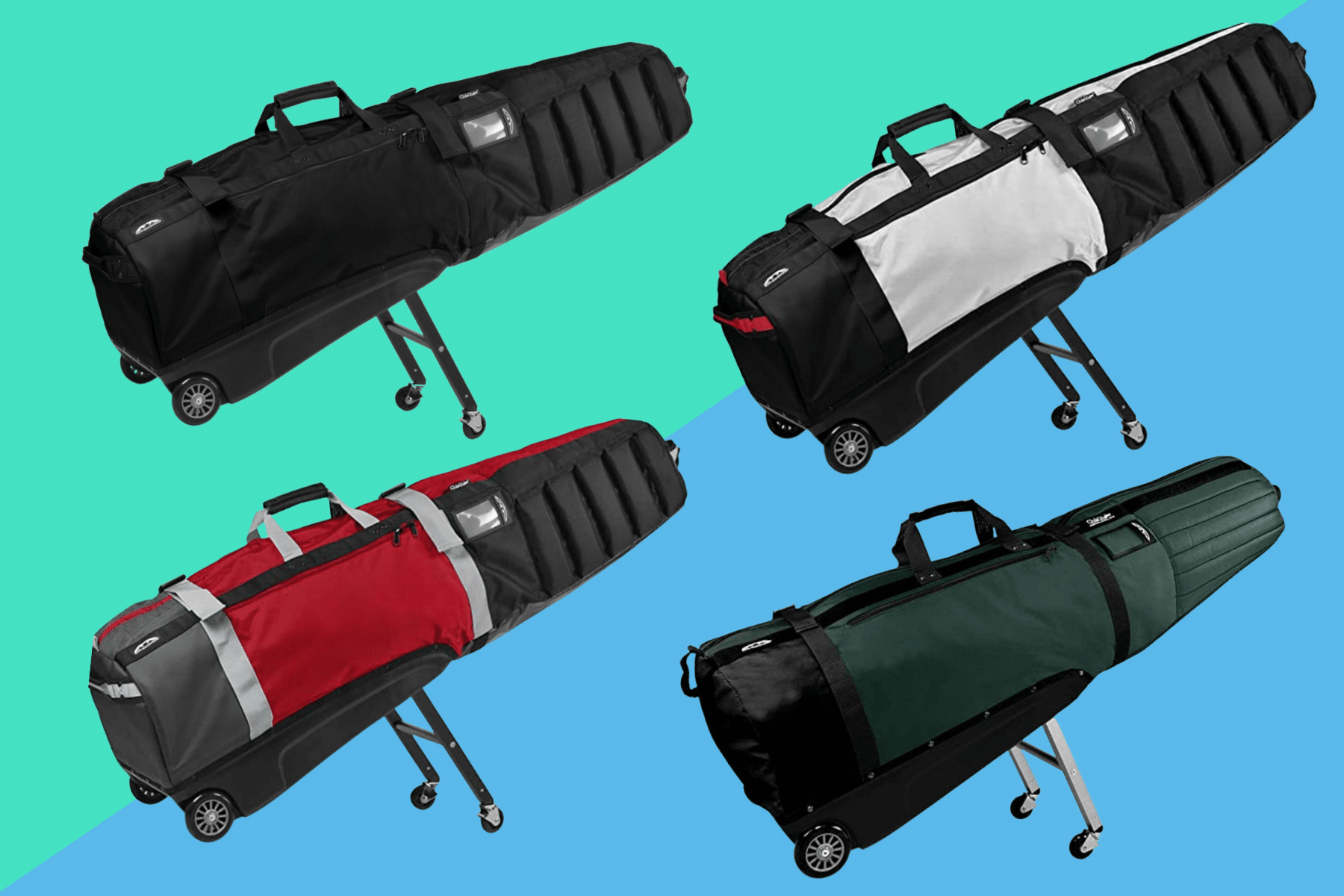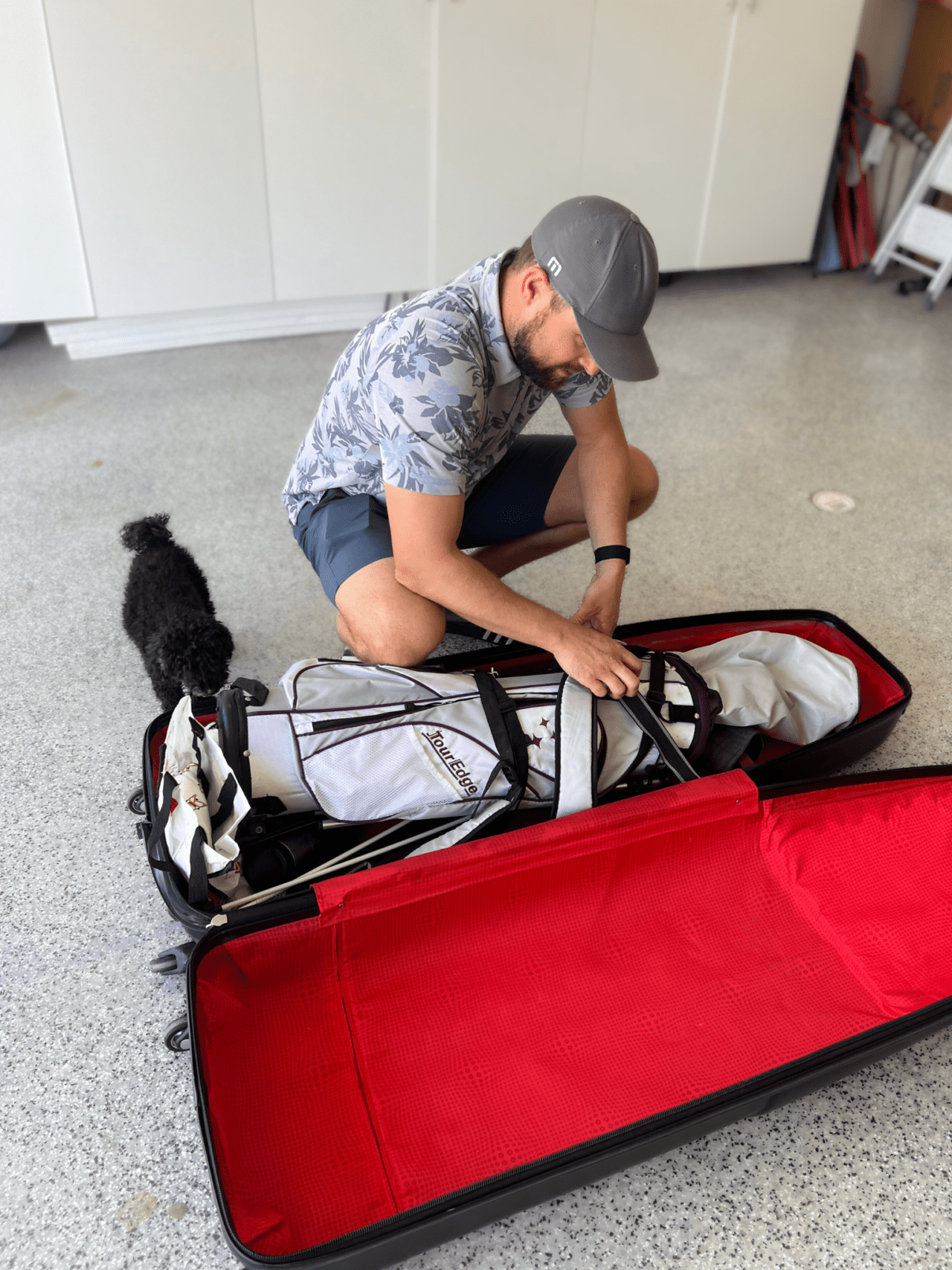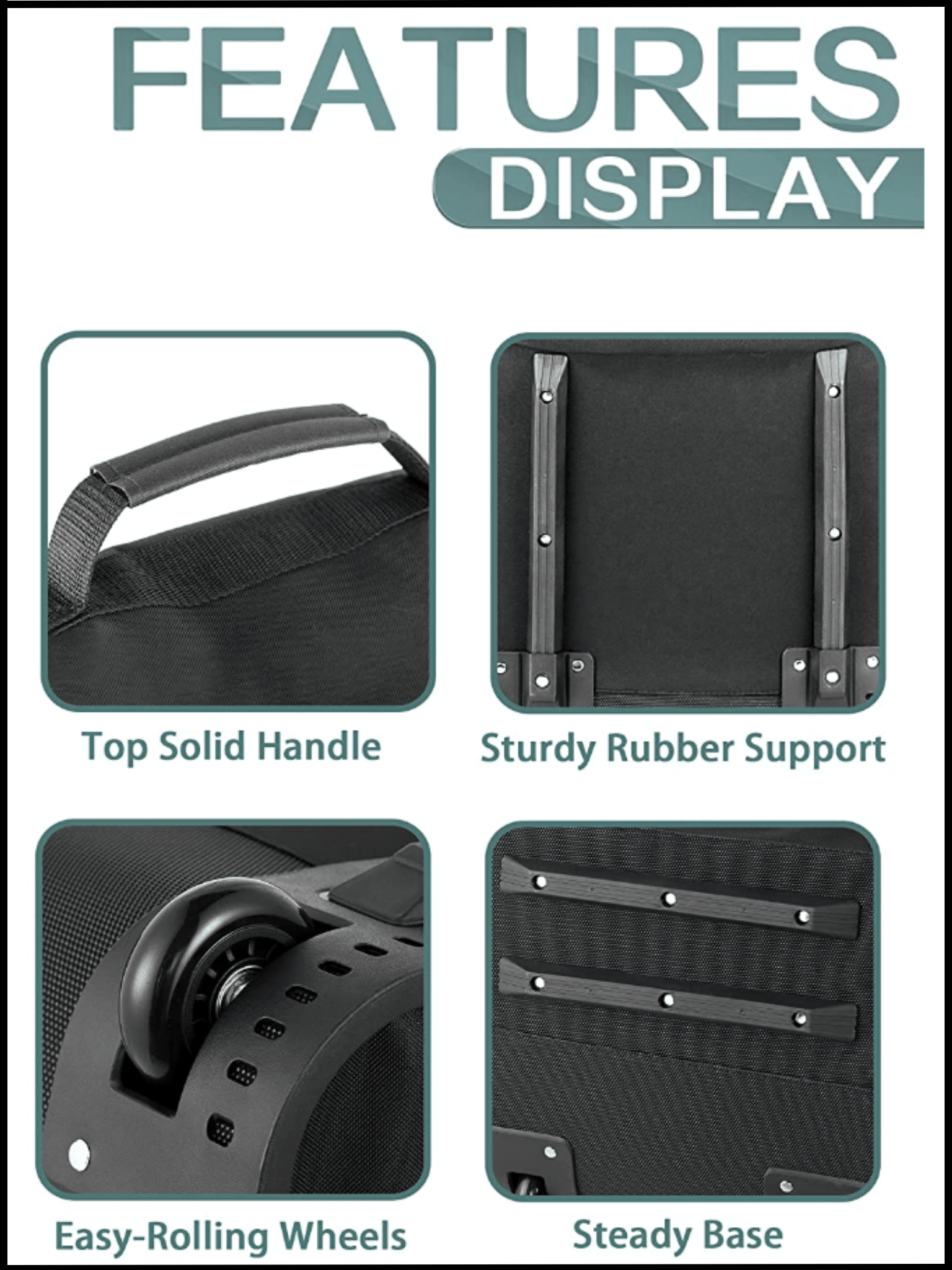Beyond snapped drivers, unseen golf travel bag risks like shaft micro-fractures, internal gear abrasion, and water damage can silently ruin your equipment.

Table of Contents
- Why Standard Golf Travel Bag Reviews Fall Short
- The Unseen Dangers: Damage Beyond a Snapped Driver
- Identifying the True Weak Points of a Golf Travel Bag
- How to Proactively Protect Your Golfing Investment
- What to Look For in Your Next Golf Travel Bag

The excitement of a golf trip is often tempered by a single moment of anxiety: watching your clubs disappear on the baggage carousel. Most golfers worry about the most dramatic type of damage—a snapped driver shaft or a crushed clubhead. While these are valid fears, the most common reviews and packing tips often overlook a set of more insidious problems. These hidden risks cause cumulative damage that can degrade your expensive equipment over time, long after your trip is over. Understanding these less-obvious threats is the first step toward true equipment protection.

Why Standard Golf Travel Bag Reviews Fall Short
When you search for information on golf travel bags, you will find countless articles ranking bags based on padding thickness, weight, and whether they are hard-shell or soft-shell. These reviews serve a purpose, but they are fundamentally incomplete. They focus almost exclusively on preventing catastrophic, single-event damage. This narrow focus means that crucial aspects of a bag’s performance and long-term protective capabilities are rarely discussed.
The problem is that this approach ignores the slow, steady wear and tear that occurs during transit. A review might praise a bag for surviving one flight without a broken club, but it fails to ask important questions. How much did the clubs shift inside? Did the zippers show any strain? Is there subtle scuffing on the clubheads or grips? These are the details that separate a merely adequate bag from a truly protective one, and they are the factors that can impact your equipment’s performance and lifespan.
The Unseen Dangers: Damage Beyond a Snapped Driver
True protection for your golf clubs means looking beyond the obvious. The impacts and neglect that happen between check-in and pickup can inflict damage that you might not notice until you are on the third hole of a bucket-list course. These are the risks that deserve your attention.
Micro-Fractures: The Silent Killer of Graphite Shafts
Perhaps the most significant hidden risk is the development of micro-fractures in graphite shafts. Unlike a clean break, these are minuscule, almost invisible stress cracks that form within the shaft’s resin and graphite layers. They are caused by sharp impacts or the constant, subtle flexing that occurs when a bag is dropped or compressed by other luggage. You will not see this damage when you unpack your clubs.
The danger is that these micro-fractures compromise the shaft’s structural integrity. A shaft weakened in this way may feel perfectly fine on the driving range. But under the immense torque of a full swing, it can suddenly fail, snapping at a seemingly random moment. This is why a golfer might have a shaft break mid-swing weeks after a trip; the initial damage was done in transit, not on the course.
Internal Abrasion: The Slow Grind on Your Gear
Inside a poorly designed travel bag, your clubs are not static. With every bump and turn, they shift and rub against each other. This constant friction causes internal abrasion. Forged irons, with their softer metal, are particularly susceptible to bag chatter, which leaves them with dings and scratches. But the damage goes deeper.
Expensive custom grips can be worn down, and the paint-fill on your woods and irons can be chipped away. Over time, this constant jostling damages not just the aesthetics of your clubs but their functional components. A quality travel bag mitigates this risk with thick internal padding and, more importantly, compression straps that lock the golf bag itself in place, minimizing any internal movement.
The Tarmac Test: What About Water and Moisture Damage?
What happens when your flight is delayed due to a thunderstorm? Your golf bag, along with hundreds of other pieces of luggage, could be sitting on a wet tarmac for an extended period. Many travel bags are made from materials that offer minimal water resistance. Moisture can easily seep through low-quality zippers and porous fabrics.
The consequences can be severe. Water can lead to rust on expensive steel shafts, ruin premium leather grips, and promote mold and mildew growth inside your bag. If you have any electronics, like a rangefinder or GPS unit, stored in an exterior pocket, they could be completely destroyed. A bag constructed from water-resistant materials with well-designed zipper covers is essential for protection against the elements.
Identifying the True Weak Points of a Golf Travel Bag
A travel bag is only as strong as its weakest component. While thick padding is important, it is often the less-glamorous features—the zippers, wheels, and seams—that fail first. Paying attention to these construction details is critical when evaluating a bag’s true durability.
Zippers and Seams: The First Line of Defense to Fail
A burst zipper is one of the most common and disastrous travel bag failures. When a zipper fails, your equipment is left exposed and vulnerable. Look for bags that use heavy-duty, oversized zippers, often labeled as YKK or a similar reputable brand. These are far more resistant to the strain of a fully packed bag.
Equally important is the stitching. A single line of stitching at a stress point, like where a handle is attached, is a major red flag. Quality construction involves reinforced or double-stitching in all high-stress areas. This ensures that the seams can withstand the pulling and rough handling that is inevitable during travel.
Wheels and Handles: The Forgotten Failure Points
Navigating a large airport with a heavy golf bag is challenging enough without a broken wheel or handle. Many budget-friendly bags use cheap, hard plastic wheels that can crack or seize up. The gold standard is smooth-rolling inline skate-style wheels, which are more durable and maneuverable.
Handles should be secured with rivets and reinforced with stitching, not just stitched into the fabric. A poorly attached handle can rip free from the bag, making it incredibly difficult to transport. Test the handles: they should feel robust and securely attached to the bag’s main structure.
The Material Myth: Is Thicker Always Better?
Many brands boast about the “denier” of their fabric, a measure of its thickness. While a high denier (e.g., 1200D Polyester) is generally good, the quality of the material and its weave are far more important. A well-constructed ballistic nylon or Cordura fabric can offer superior tear and abrasion resistance compared to a thicker but lower-quality polyester.
The finest travel goods often blend materials to leverage their unique strengths. For example, a bag might use a durable, abrasion-resistant canvas for the main body while incorporating full-grain leather reinforcements on handles and high-wear areas. This approach, common in high-end luggage, demonstrates a commitment to craftsmanship and longevity, ensuring the bag itself stands the test of time, just like the precious cargo it protects.
How to Proactively Protect Your Golfing Investment
You can own the best travel bag in the world, but your equipment is still at risk if you pack it improperly. A combination of smart packing strategies and a well-chosen bag provides the ultimate defense against both obvious and hidden damage.
Strategic Packing Techniques for Maximum Security
A few simple steps can dramatically reduce the risk of damage. First, always use a support rod, commonly known as a “stiff arm” or “backbone.” This adjustable aluminum rod should be set to be slightly longer than your longest club, providing a rigid spine that absorbs the force of vertical impacts.
Next, reduce the potential for movement. If your driver head is removable, take it off and store it in a headcover in a pocket of your golf bag. Use towels or extra clothing to wrap around the remaining clubheads, creating a snug, padded bundle. Finally, fill any empty space within the travel bag with shoes or clothes to ensure your golf bag cannot shift around during transit. The less it moves, the safer it is.
Choosing a Bag That Mitigates Hidden Risks
When selecting your next travel bag, look past the marketing and focus on the features that directly address the hidden risks. A feature-by-feature comparison can help clarify what truly matters for long-term protection.
| Feature to Prioritize | Why It Matters (The Hidden Benefit) |
|---|---|
| Thick Internal Padding & Top Padding | Reduces the risk of impact-related micro-fractures in shafts. |
| Internal Compression Straps | Secures the golf bag itself, preventing internal abrasion and chatter. |
| Oversized, Brand-Name Zippers | Prevents catastrophic zipper failure, the bag’s most common weak point. |
| Inline Skate-Style Wheels | Ensures smooth, durable transport and prevents wheel cracks or seizures. |
| High-Quality, Water-Resistant Materials | Protects against moisture damage from rain on the tarmac. |
| Reinforced Stitching on Handles | Prevents handles from ripping off under load, ensuring easy handling. |
What to Look For in Your Next Golf Travel Bag
Ultimately, selecting a travel bag is an investment in protecting your more significant investment: your golf clubs. It requires shifting your mindset from finding the cheapest option to finding the best value. True value lies in durability, thoughtful design, and superior materials. It is about trusting that your equipment will arrive in the same condition you packed it, trip after trip.
Look for brands that prioritize craftsmanship. A company that builds its reputation on the quality of its materials, like robust canvas and genuine full-grain leather, understands the importance of longevity. This philosophy of building things to last is exactly what you need in a product designed to withstand the rigors of air travel. A warranty that covers more than just manufacturing defects is also a strong indicator of a company’s confidence in its product. By focusing on these signs of quality, you can secure a travel bag that not only prevents a snapped driver but also guards against the hidden dangers that can slowly degrade your gear.



